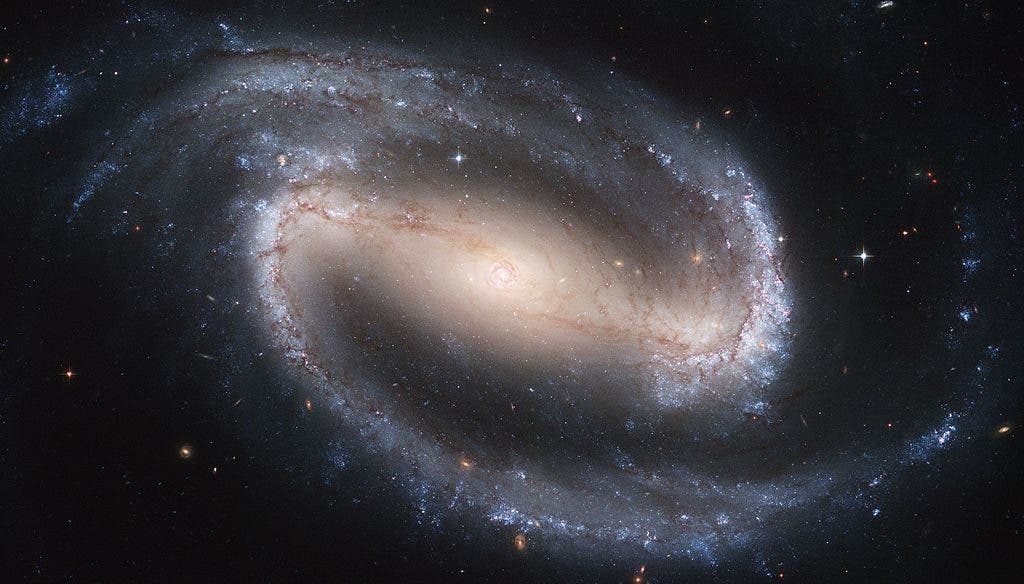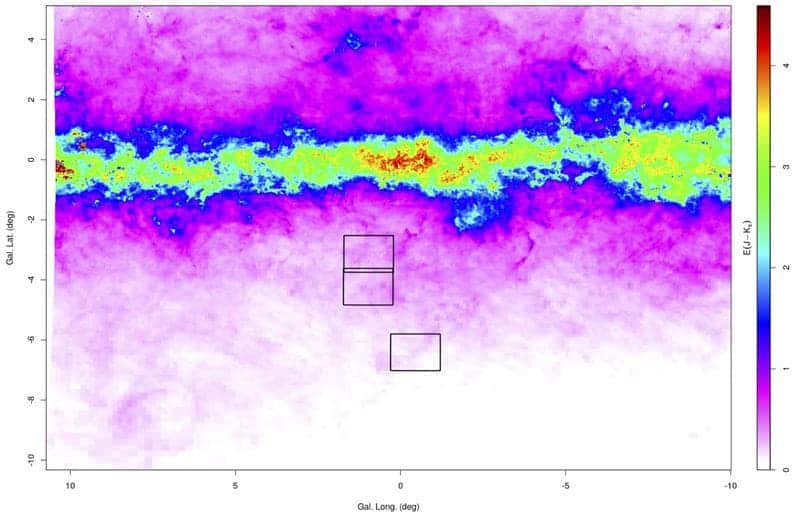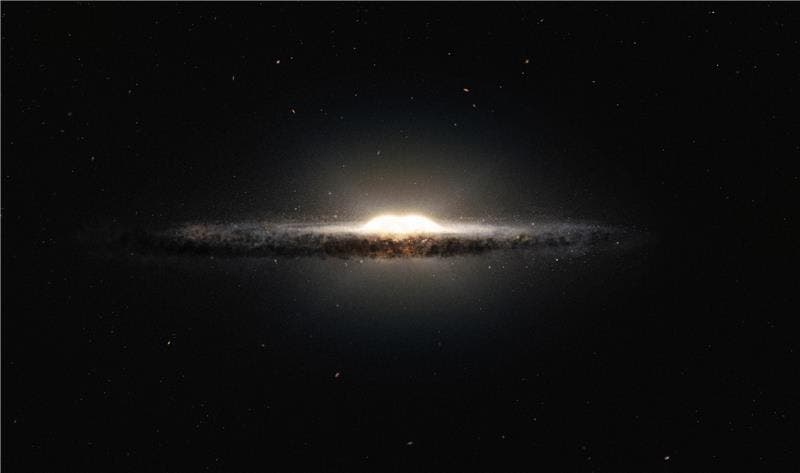Astronomers have developed the first age-map of the Milky Way galaxy, showing a period of star formation that lasted for 4 billion years.

NGC 1300, a barred spiral galaxy, similar in many ways to the Milky Way. For obvious reasons, we don’t have any real images of our own galaxy. Image credits: Hubble Space Telescope / NASA.
As far as galaxies go, the Milky Way is pretty average. It’s a barred spiral galaxy — a spiral-shaped galaxy with a central bar-shaped structure composed of stars — with a diameter between 100,000 and 180,000 light-years. It’s estimated that our galaxy hosts 100-400 billion stars and at least 100 billion stars.
At its center (the “bar” in the “barred spiral galaxy”), the Milky Way features a star bulge — a massive star population thousands of light years in diameter, containing about a quarter of all the stars in the galaxy. This bulge has two components: a population of metal-poor stars that have a spherical distribution, and a population of metal-rich stars that wrap around them like a waistline or a two-lobed peanut.
[alert style=”alert-info” close=”false”]For astronomers, all elements other than hydrogen and helium are referred to as ‘metals’ — even though elements such as oxygen and carbon which are considered non-metals by chemists. [/alert]

The infrared map constructed from the VISTA Variables in the Via Lactea (VVV) survey of the inner Milky Way showing the studied areas. Credit: ESO/M. Rejkuba/F. Surot Madrid / E. Valenti.
Analyses of these two areas have yielded conflicting results. Now, an international team of researchers has used both simulated and observed data, from millions of stars to map the age and development of these intriguing stars.
“We analysed the colour and brightness of stars to find those that have just reached the point of exhausting their hydrogen fuel-burning in the core, which is a sensitive age indicator. Our findings were not consistent with a purely old Milky Way bulge, but require star formation lasting around 4 billion years and starting around 11 billion years ago. The youngest stars that we see are at least 7 billion years old, which is older than some previous studies had suggested.”
Results paint an interesting overall picture, but it’s still hard to accurately resolve smaller areas within the bulge. Ultimately, researchers hope to create a more accurate, detailed map of the Milky Way core.

Artist’s impression showing the peanut shaped structure in the central bulge. Credit: ESO/NASA/JPL-Caltech/M. Kornmesser/R. Hurt.
Francisco Surot Madrid, the co-lead author of the study, concludes:
“Previous studies have told us that the metal-rich stars in the bar are likely to be the youngest stars. Whilst we can’t disentangle which star belongs to the bar/peanut or the spheroid component in the data we are using, our results tell us that the bar was already formed about 7 billion years ago and there were no large amounts of gas inflowing and forming stars along the bar after that.”
The study hasn’t been peer-reviewed. Results will be presented at the European Week of Astronomy and Space Science.









